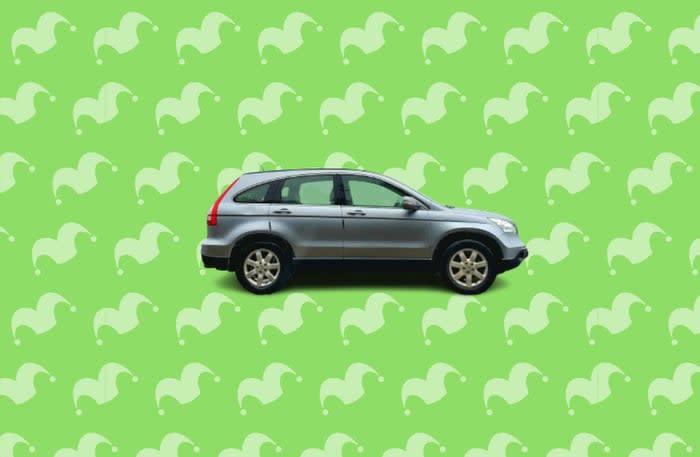
Image source: Upsplash/The Motley Fool
Your location is one of the dozens of factors that go into determining how much you’ll pay for auto insurance. For example, the average annual premium for drivers in Michigan is $5,766. In Ohio — Michigan’s neighbor to the south — drivers pay an average annual premium of $2,238.
That makes Michigan one of the most expensive states to insure a car and Ohio one of the cheapest states. However, if you don’t regularly shop around for new car insurance, there’s a good chance you’re leaving money on the table.
Average annual rates for auto insurance
According to Data Quadrant, auto insurance rates can be broken down by broad regions.
|
Region |
States included |
Average annual premium |
|---|---|---|
|
Mid-Atlantic |
NY, NJ, MD, WV, VA, DE, PA, DC |
$3,327 |
|
Midwest |
ND, SD, MN, WI, MI, NE, KS, IA, MO, IL, IN, OH, KY |
$3,028 |
|
Northeast |
ME, VT, MA, CT, NH, RI |
$2,560 |
|
Northwest |
WA, MT, OR, ID, WY |
$2,247 |
|
Southeast |
AR, TN, NC, MS, SC, LA, AL, GA, FL |
$3,026 |
|
Southwest |
UT, CO, AZ, NM, OK, TX |
$2,982 |
|
West |
CA, NV |
$2,836 |
|
Non-Mainland |
AK, HI |
$1,844 |
Data source: Data Quadrant
As you can see, rates vary widely. For the sake of illustration, we’ll use the average national rate of $2,731.
How much you can save
How much you can save by shopping around for new auto insurance varies, depending (again) on where you live and whether you’d like to make any changes to your policy.
A report from the Texas Office of Public Insurance Counsel (OPIC) found that Texas residents who had been with the same insurer for eight years before switching car insurance companies shaved 19% off their premiums. If they’ve been paying the national average of $2,731, that switch amounts to an annual savings of $519.
Multiple ways to save
The best car insurance companies offer a slew of discounts. As you shop, compare prices only after factoring in potential discounts. Here are some of the most dependable ways to slice and dice your auto insurance rates.
Consider a higher deductible
Yes, a higher deductible means having to pay a higher amount if you get into an accident. However, it can also save you a bundle. According to an executive from the Insurance Information Institute, increasing your deductible from $500 to $1,000 can reduce your annual premium by 20% to 25%.
Let’s say you’ve been paying $2,731 with a $500 deductible but raise it to $1,000. A 20% to 25% premium reduction means saving $546 to $683 annually.
Look into usage-based coverage
Some insurers offer usage-based insurance or telematics coverage. To take advantage of the discounts associated with usage-based coverage, you must agree to allow your insurance company to track your driving habits by using telematics technology.
Whether you get a discount (and how steep that discount is) depends on your driving habits. If you’re a safe driver, the discounts can be impressive. Nationwide SmartRide® telematics car insurance offers discounts of up to 40%, and State Farm Drive Safe and SaveTM offers discounts of up to 30%.
Bundle
Insurers love it when you purchase more than one policy type from them. For example, if you’re a renter, carry your renters insurance and auto coverage through the same insurer. If you own a home, bundle your homeowners and auto insurance. According to Progressive, bundling can save you around 5%.
Keep an eye on your credit score
Studies show that drivers with good credit scores make fewer insurance claims. So insurers base rates, in part, on your credit score (in most states). Using national data, we see that drivers with excellent credit scores pay around half as much as drivers with poor credit scores.
Focus on clean driving
One of the easiest ways to keep your rates low is to drive like your rates depend on it. Statistics from Data Quadrant indicate that having one speeding ticket on your driving record increases your rates by about 10%. A single accident will boost your rate by 19%, and a DUI will add a whopping 37% to your annual premium.
Shopping around for new auto insurance may not sound like your idea of a good time, but consider this: A Consumer Reports national survey found that consumers who switched to a new auto insurance company not only saved money but also reported a higher level of satisfaction. That’s a win-win any way you look at it.
Alert: highest cash back card we’ve seen now has 0% intro APR until nearly 2026
This credit card is not just good – it’s so exceptional that our experts use it personally. It features a 0% intro APR for 15 months, a cash back rate of up to 5%, and all somehow for no annual fee!
Click here to read our full review for free and apply in just 2 minutes.
We’re firm believers in the Golden Rule, which is why editorial opinions are ours alone and have not been previously reviewed, approved, or endorsed by included advertisers. The Ascent does not cover all offers on the market. Editorial content from The Ascent is separate from The Motley Fool editorial content and is created by a different analyst team.Dana George has no position in any of the stocks mentioned. The Motley Fool recommends Progressive. The Motley Fool has a disclosure policy.

Based in New York, Stephen Freeman is a Senior Editor at Trending Insurance News. Previously he has worked for Forbes and The Huffington Post. Steven is a graduate of Risk Management at the University of New York.

